In part 1 we covered:
- building the oven plinth
- learning news skills in bricklaying, tolerance and forgiving
- raids on the bottle bank for insulation materials
- construction of the oven floor.
Now it’s time to get on with the main job – creating the oven itself.
Before getting muddy there was a short break in proceedings. Yours truly had decided a brick arch around the oven door would be a nice touch, so it was time to make up a quick ‘former’ using some scrap wood. This would support the bricks while the arch was built around it.
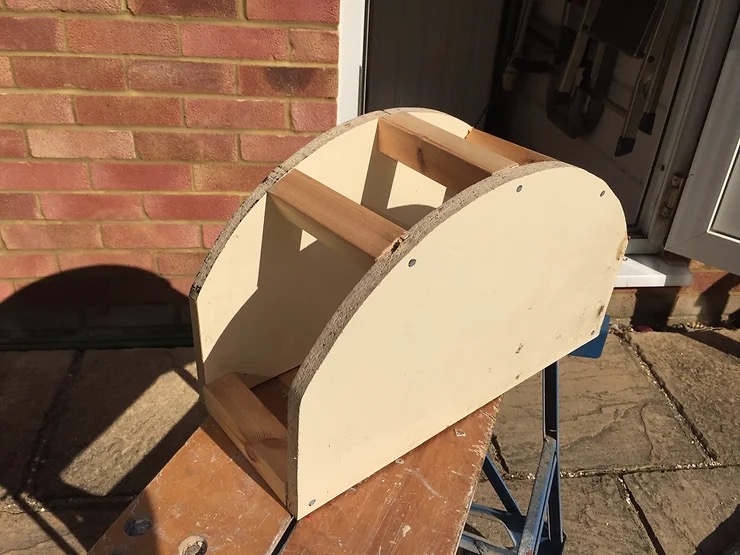
Oven construction
The general approach for building the oven structure is:
- Build a sandcastle the shape and size you want the void inside the oven to be.
- Cover with a few sheets of wet newspaper.
- Build a layer of clay over the top of the newspaper. This will be the inner wall of the oven.
- On top of the clay, apply several thick layers of cob. The cob provides mass and a degree of insulation.
- Allow everything to dry a bit, then scoop out the sand, leaving a self-supporting oven.
Sandcastles
The sandcastle is built on top of the firebricks. We cut out and laid a plastic sheet on top of the bricks first. This stops the sand staining the firebricks and makes it easy to pull the remnants of the sandcastle out when the time comes.
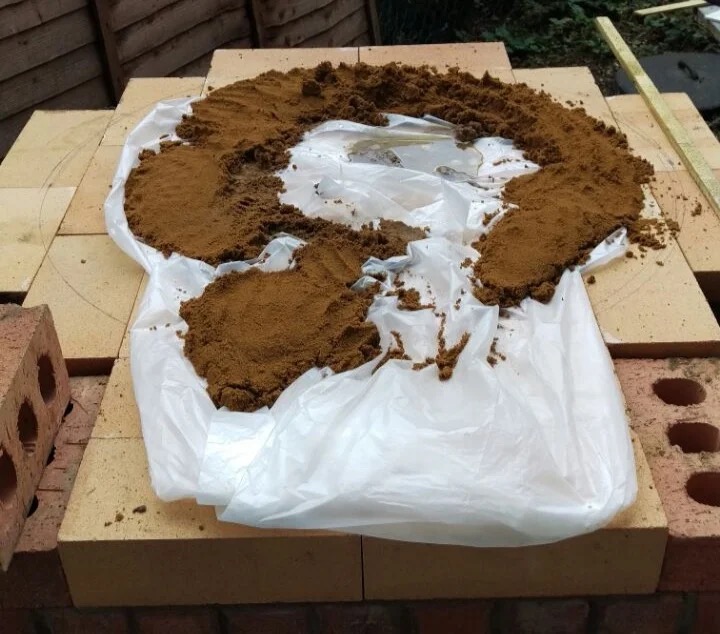
The sandcastle was pretty straightforward. We used old bricks and rubble as space fillers, saving the sand for the outer layer. (If you do use bricks to fill the space, just make sure they’ll fit through the doorway on their way out!) Take your time to get the sandcastle as uniform and even as possible.
With the technical work (bricklaying, base, firebricks, arch) complete, this is a good point to bring in some free labour. Civil engineers are ideal for this (if you can’t get them, you might have to put up with rude ones). We bribed our crew with the promise of delicious wood-fired pizza in some distant future.
Below you can see the wooden former holding up the brick arch while the spacing and angles are adjusted. Blobs of mortar are then added to hold it in place. The string was a rare bit of foresight – to help pull out the former after everything is dry.
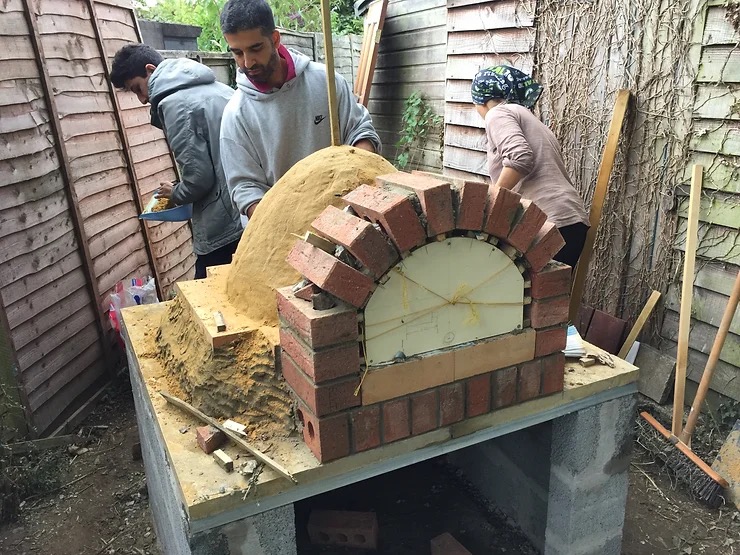
The sandcastle is covered with a few sheets of wet newspaper. This makes it easier to remove the sand afterwards. (When you hit newspaper, stop digging!)
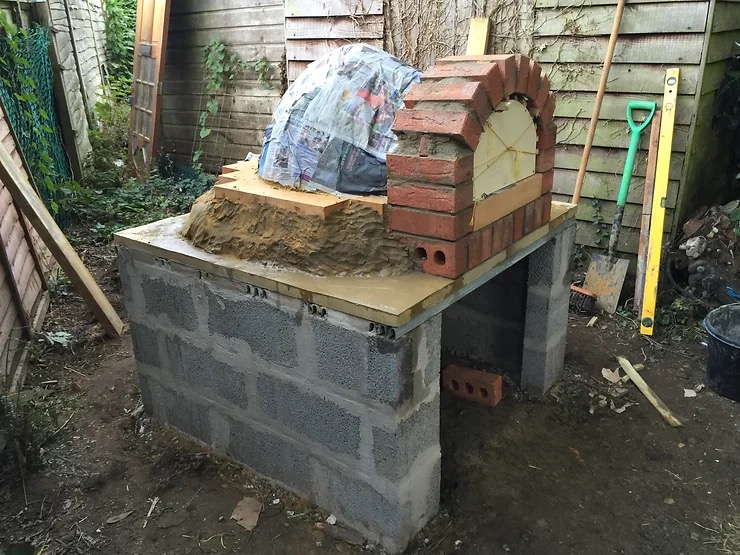
The inner oven
We’re now ready to start building the oven wall. The clay oven lining was applied on top of the newspaper. This was built up in layers until we had a solid clay wall around 3-4 inches thick.

It’s important to squash it together as tightly as possible or you’ll get cracks appearing inside the oven when everything dries out. (Even after doing this we still had some cracks – so don’t stint on this!)
After a few layers of squished-together clay, it’s starting to look something like an oven!
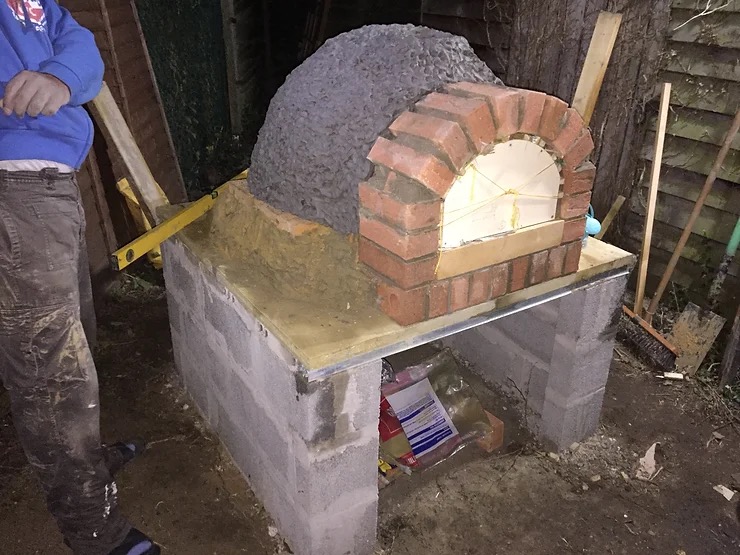
Mixing the cob
Whenever you research cob on the interwebs, you’ll see hippies mixing cob with their bare feet.
There’s a reason for this. It’s damn good fun!
Mixing took place on an old groundsheet – with 3 or 4 of us jostling for room and leaping around like nutters. We mixed sand and clay together first (as in the video), then added straw.
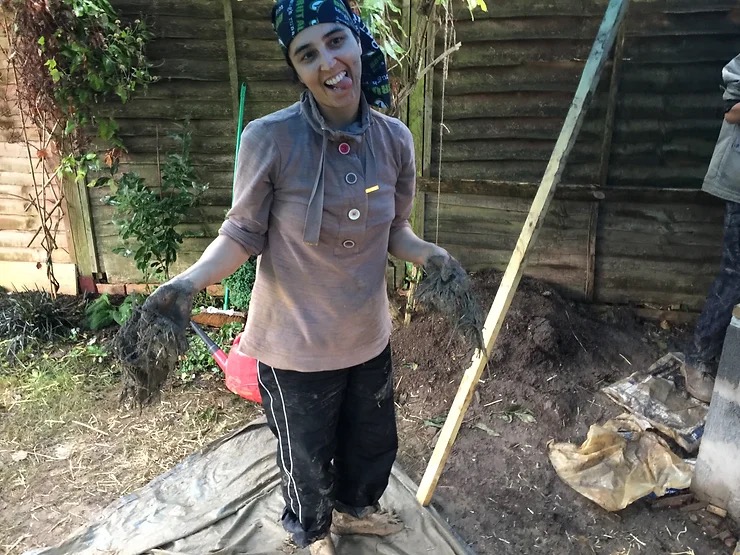
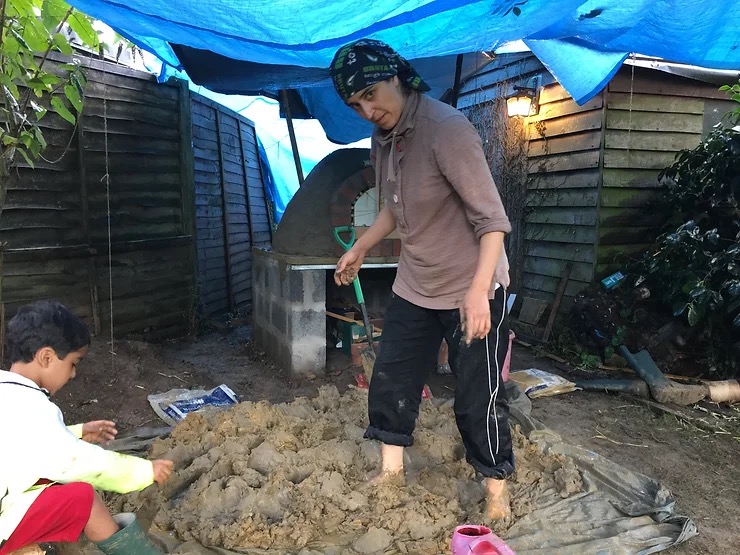

The outer oven wall
The cob is then applied in several thick layers on top of the clay to form the outer oven wall.
After the mixing, this is the best bit. The cob is lovely to work with and goes on really easily.

Cob construction went on through the rain and well into the night…
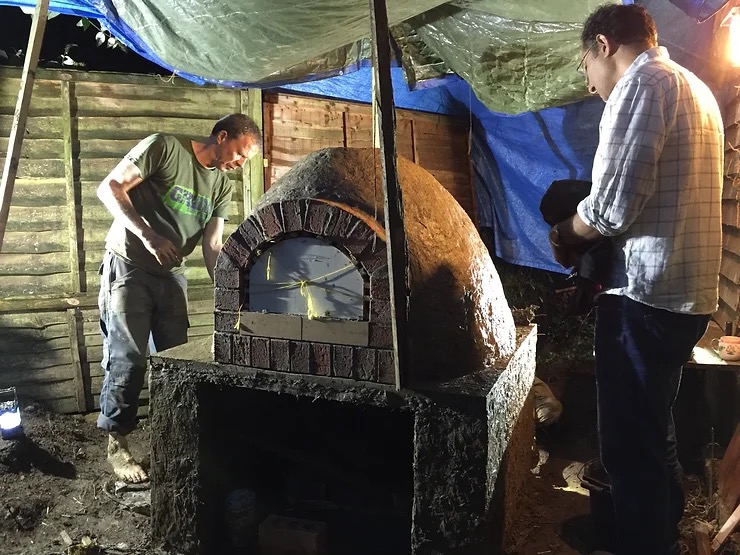
The cob layer ended up being around 8-10 inches thick.
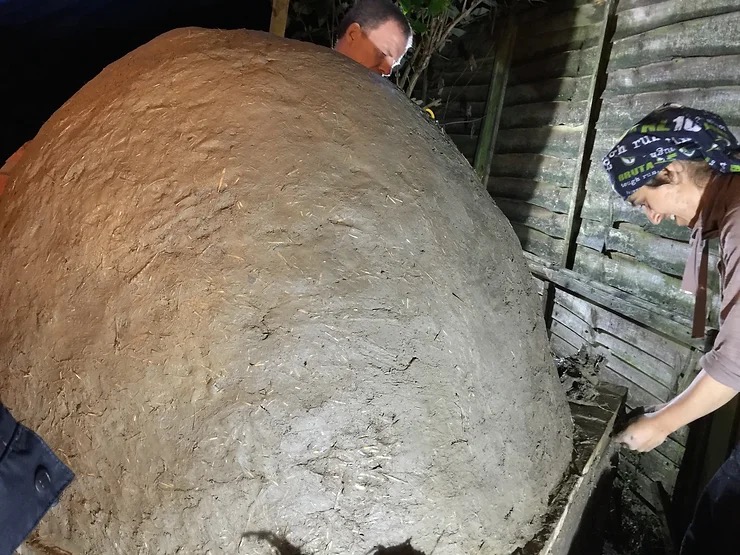
We left a hole in the top for a chimney, moulding the clay around a plastic pot to leave a hole the right size for a short metal flue pipe.
It was then covered from the rain and left to dry for a few days, before we felt brave enough to try and remove the wood former…
So that’s the end of part 2. Join us for the final instalment for the big reveal, and that all important pizza taste test…
